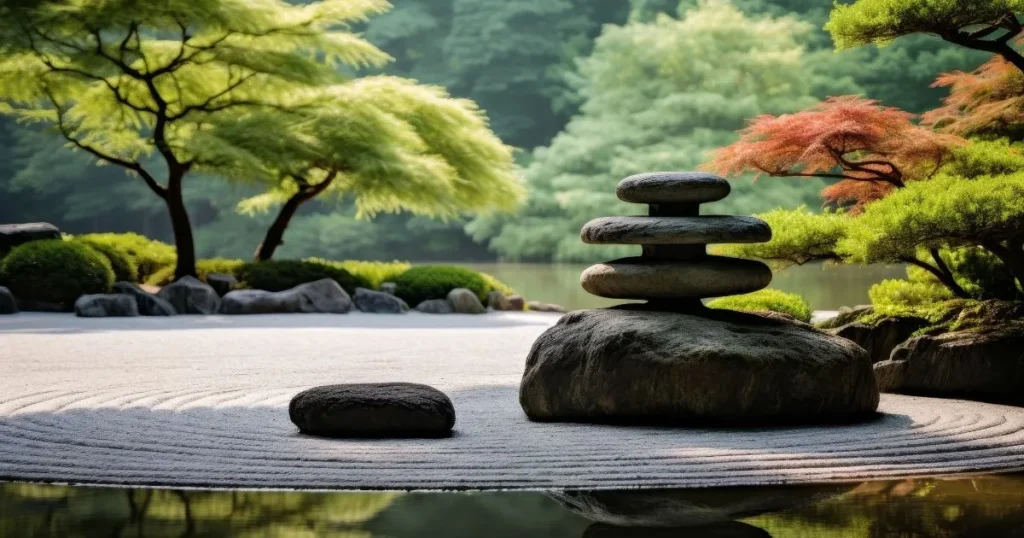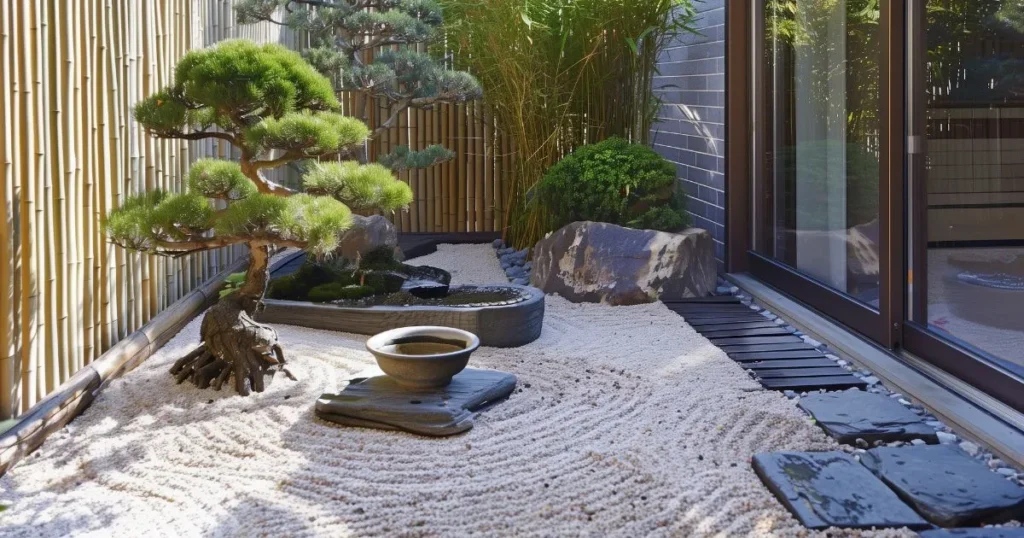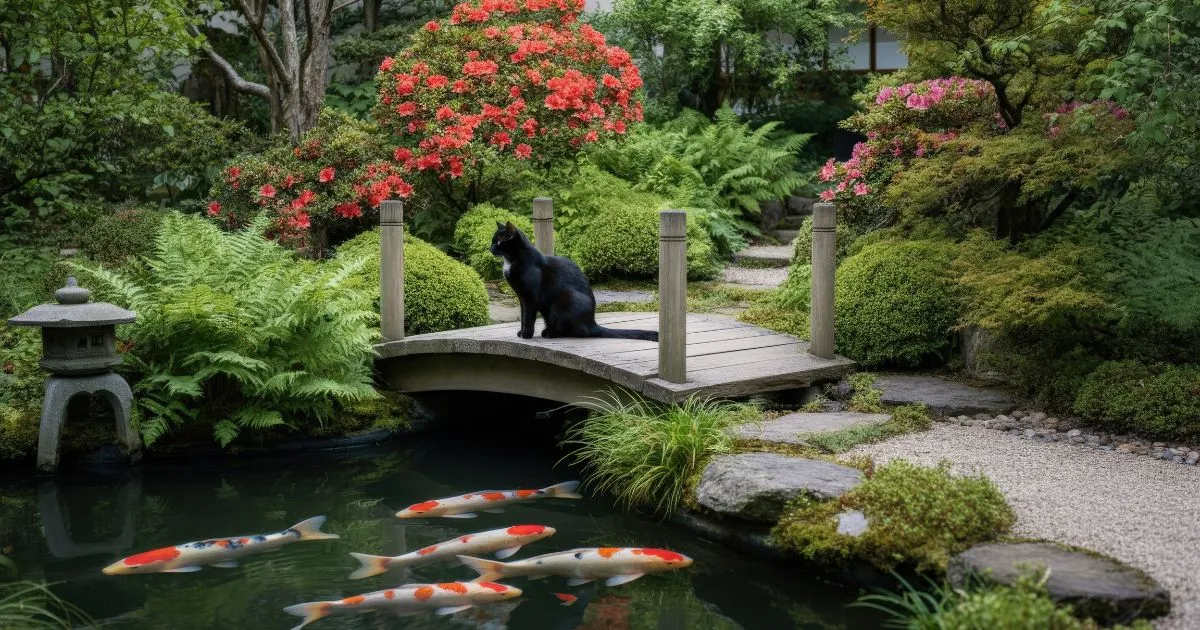Table of Contents
Introduction to Japanese Zen Gardens
Japanese Zen gardens, also known as karesansui, have captivated the hearts of people across the world for centuries. Known for their serene and tranquil atmosphere, these gardens serve as a physical and metaphorical space for meditation, contemplation, and introspection. They reflect the essence of Zen Buddhism by focusing on the principles of simplicity, harmony, and mindfulness. Today, these gardens continue to be symbols of peace and a testament to Japan’s cultural reverence for nature.
In a fast-paced world, a Zen garden can provide a rare opportunity for stillness and focus. By immersing oneself in the subtle beauty and symbolism of these gardens, individuals can find solace and clarity. Let’s explore the origins, design philosophy, and cultural significance of Japanese Zen gardens.
Origins and Historical Significance
The origins of Japanese Zen gardens can be traced back to the 13th century during the Kamakura period in Japan. The gardens were deeply influenced by Zen Buddhist monks who sought to create peaceful, contemplative spaces that would aid in meditation. It is said that the Zen gardens were developed as a way to bring nature’s beauty and energy into monastic settings, offering monks a space to focus on their spiritual practices.
The first known Zen garden is located at the Ryoan-ji Temple in Kyoto, Japan. This garden, which dates back to the late 15th century, is widely regarded as one of the finest examples of the Zen garden tradition. The simplicity and meditative qualities of the Ryoan-ji garden, with its arrangement of rocks and raked gravel, set the foundation for future Zen gardens across Japan and the world.
During the centuries that followed, the popularity of Zen gardens grew, spreading across Japan and eventually influencing gardening techniques in Western cultures. Today, Zen gardens are celebrated worldwide, not only for their aesthetic beauty but also for their role in promoting mindfulness and inner peace.
The Core Elements of Japanese Zen Gardens
Zen gardens are known for their minimalist design, with each element carefully chosen to evoke a sense of balance and calm. The core elements of a traditional Japanese Zen garden include rocks, gravel, water features, and plants.
1. Raked Gravel (Karesansui)
The gravel in a Zen garden often serves as a representation of water or waves. The act of raking the gravel into patterns such as swirling curves or straight lines is an essential ritual that invites the gardener to focus their mind. The texture of the raked gravel symbolizes the constant movement of water, while the stillness of the garden encourages reflection and tranquility.
Raking the gravel is considered a form of meditation. Each movement of the rake is deliberate and slow, offering a chance to connect with the present moment. Over time, the raked patterns can evoke a sense of peace and offer a meditative focal point.
2. Stones and Rocks (Ishi)
Stones and rocks are key elements of Zen gardens and are often arranged to represent mountains, islands, or other natural features. The use of rocks symbolizes the permanence and strength of nature. In many Zen gardens, a single rock or small group of rocks may be carefully positioned to create a focal point, drawing the viewer’s attention to the garden’s deeper meanings.
In the Ryoan-ji garden, for example, the 15 rocks are arranged in such a way that no matter where you stand, you can never see all 15 at once. This deliberate arrangement is meant to remind visitors of the limits of human perception and the idea that there is always more to discover.
3. Water Features (Mizu)
While many Zen gardens lack actual water features, the concept of water is symbolized through the use of gravel, stones, and other design elements. However, some Zen gardens do feature water elements, such as ponds or small streams, to add movement and life to the space. These water features are meant to evoke a sense of fluidity and the impermanence of life.
The symbolic nature of water in Zen gardens reflects the Buddhist principle of mujo, the understanding that all things are transient. The stillness of the pond, for example, may represent the clarity of a quiet mind, while the movement of the water could symbolize the flow of life and time.
4. Plants and Moss (Koke)
Though minimalistic, plants play a significant role in Zen gardens. They are selected carefully for their subtle beauty and ability to thrive in the serene, controlled environment of the garden. Moss, in particular, is a common choice in Zen gardens due to its soft, lush appearance and low maintenance needs.
Plants and trees in Zen gardens are not just for aesthetic appeal; they represent life and the cycles of nature. The seasonal changes, such as the blooming of flowers or the shedding of leaves in autumn, mirror the transient nature of life that Zen Buddhism emphasizes.

Design Philosophy and Principles
The design of Japanese Zen gardens is not merely an artistic endeavor but a spiritual practice that mirrors the teachings of Zen Buddhism. The core design principles of these gardens are rooted in the concepts of simplicity, balance, and mindfulness. The following principles are fundamental to creating and understanding a Zen garden.
Harmony and Balance
In Zen garden design, harmony refers to the perfect alignment of elements—stones, gravel, and plants—so that they create a balanced and peaceful environment. Each element in the garden complements the others, and no single feature is allowed to dominate or distract from the overall composition.
Balance is achieved by ensuring that the garden feels unified and complete. For example, a Zen garden may contain asymmetrical elements, such as an uneven arrangement of rocks, which helps to create a dynamic balance rather than a static one.
Simplicity and Minimalism
Simplicity is a central tenet of Zen philosophy, and this is reflected in the design of the garden. The idea is to reduce the garden to its essential components, allowing the mind to focus on the core elements and reflect on the nature of existence. A Zen garden does not contain unnecessary decorations or excessive elements that might detract from the overall feeling of serenity.
Minimalism also means that every object and every line has a purpose. There is no ornamentation for the sake of ornamentation. Every stone, plant, and raked line serves a specific role in promoting mindfulness and reflection.
Symbolism and Representation
Zen gardens are rich with symbolism. Each element in the garden—whether it is a stone, a plant, or a pattern in the gravel—represents something deeper than its physical form. The arrangement of stones can symbolize mountains, islands, or even animals. The raked patterns in the gravel might represent water or waves, suggesting fluidity and movement in contrast to the stillness of the garden.
This symbolic approach invites visitors to reflect on the nature of life, death, and impermanence, as well as the interconnectedness of all things. The Zen garden, in its entirety, is a representation of the universe, a microcosm of the greater world.
Modern Interpretations and Variations
While traditional Zen gardens remain popular, modern interpretations of the Zen garden continue to emerge. These contemporary gardens often incorporate elements of Western design or adjust traditional principles to fit into urban spaces or private homes.
Zen Gardens in Urban Spaces
In large cities where nature may seem distant, Zen gardens are increasingly being incorporated into urban design. These modern Zen gardens aim to create small, peaceful havens in the middle of busy streets or office complexes. The minimalist nature of the Zen garden makes it an ideal fit for urban spaces that demand efficiency and tranquility in equal measure.
Zen Gardens in the Home
More and more people are bringing the principles of Zen garden design into their own homes. Small desktop Zen gardens are especially popular in offices, where the act of raking gravel or arranging rocks can serve as a calming ritual during the workday. At the same time, larger outdoor Zen gardens can serve as private sanctuaries for personal meditation and relaxation.
Zen Gardens in Different Seasons
One of the most beautiful aspects of Zen gardens is their ability to change with the seasons. Whether it’s the delicate blossoms of cherry trees in spring, the lush greenery of summer, or the serene beauty of snow-covered gardens in winter, the garden continuously reflects the natural world around it. This seasonal transformation serves as a reminder of the impermanence of life, a key concept in Zen Buddhism.

Conclusion
Japanese Zen gardens continue to be an enduring symbol of peace, harmony, and balance. With their focus on simplicity, mindfulness, and the beauty of nature, these gardens offer a space for introspection and reflection in a world that is increasingly fast-paced and chaotic. Whether traditional or contemporary, Zen gardens provide a timeless reminder of the value of stillness, patience, and connection to the natural world.
In creating and experiencing a Zen garden, we are invited to pause, observe, and contemplate the deeper truths of existence. In doing so, we can find a sense of calm and clarity that nourishes both the body and the mind.
Frequently Asked Questions (FAQ
Q: What is the purpose of a Zen garden?
A: The purpose of a Zen garden is to provide a space for meditation, contemplation, and mindfulness. It is designed to promote tranquility, harmony, and inner peace by using minimalistic elements that encourage deep reflection.
Q: How do I care for a Zen garden?
A: Caring for a Zen garden involves maintaining the gravel, cleaning the stones, and ensuring the plants are healthy. In a traditional Zen garden, the gravel is regularly raked into patterns, and the stones are carefully cleaned and arranged. Regular maintenance is essential to preserve the garden’s serene aesthetic.
Q: Are Zen gardens only for large spaces?
A: No, Zen gardens can be created in spaces of any size. Whether it’s a small tabletop Zen garden or a large outdoor garden, the principles of balance, simplicity, and mindfulness can be applied to gardens of all sizes.
Q: What are the benefits of having a Zen garden at home?
A: A Zen garden offers several benefits, including stress relief, improved focus, and a space for introspection. The act of tending to the garden can also be a meditative practice, helping to bring mindfulness and calm to your daily routine.
Q: How are Zen gardens different from traditional gardens?
A: Zen gardens differ from traditional gardens in their minimalist approach. Unlike traditional gardens that may feature a variety of plants, flowers, and complex designs, Zen gardens focus on simplicity, symbolism, and natural elements like rocks and gravel. The goal is not to create a beautiful landscape but to evoke a sense of peace and contemplation.

